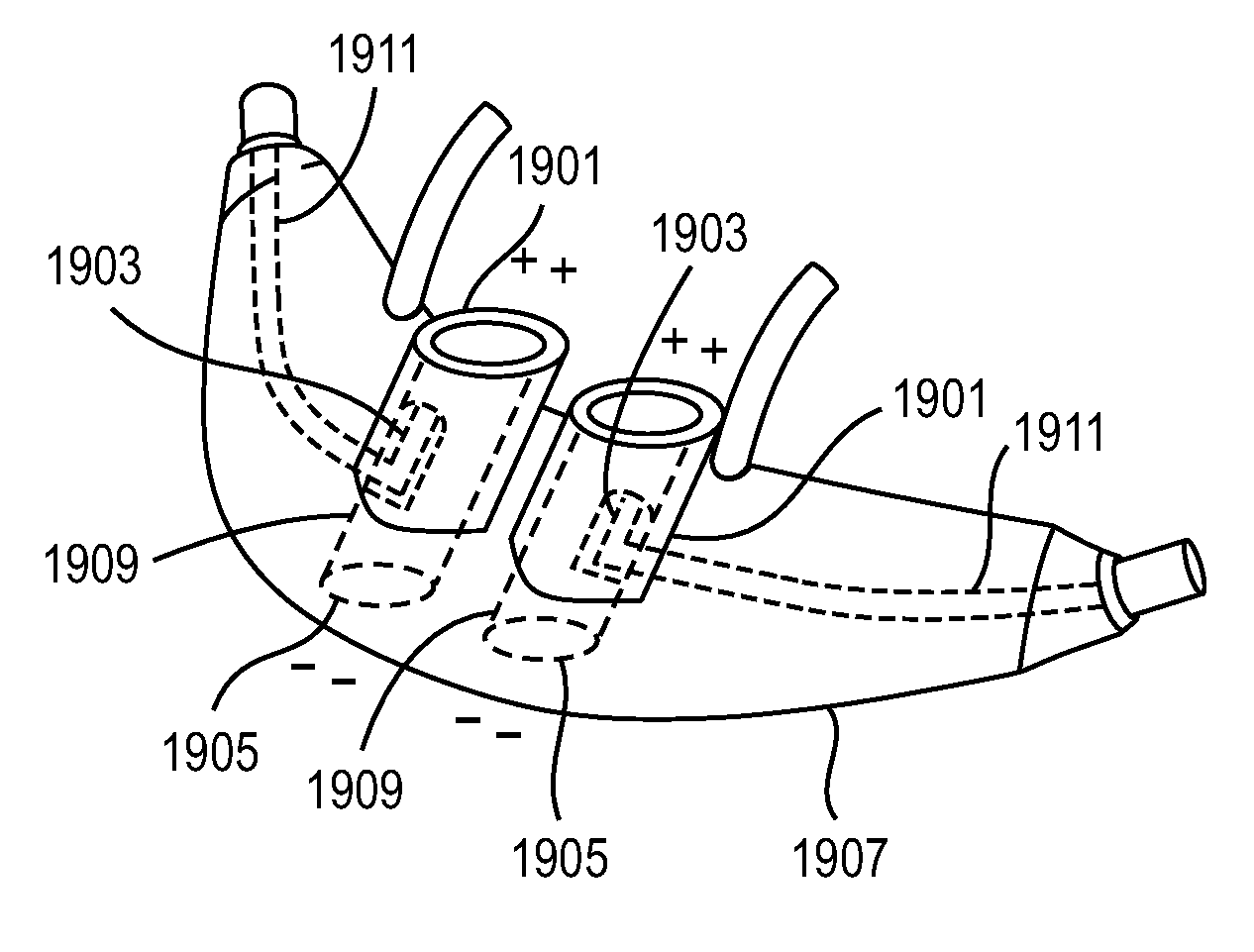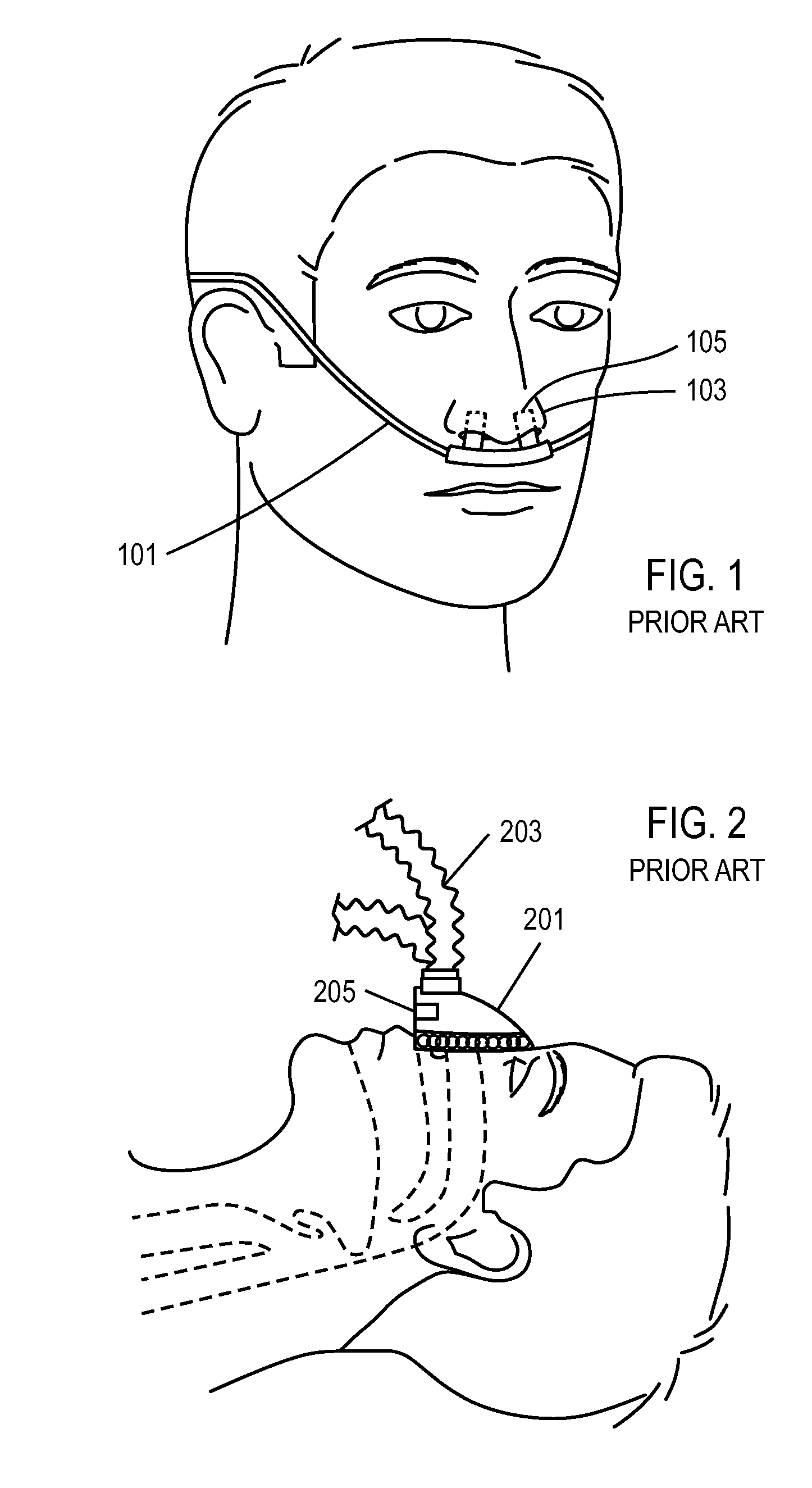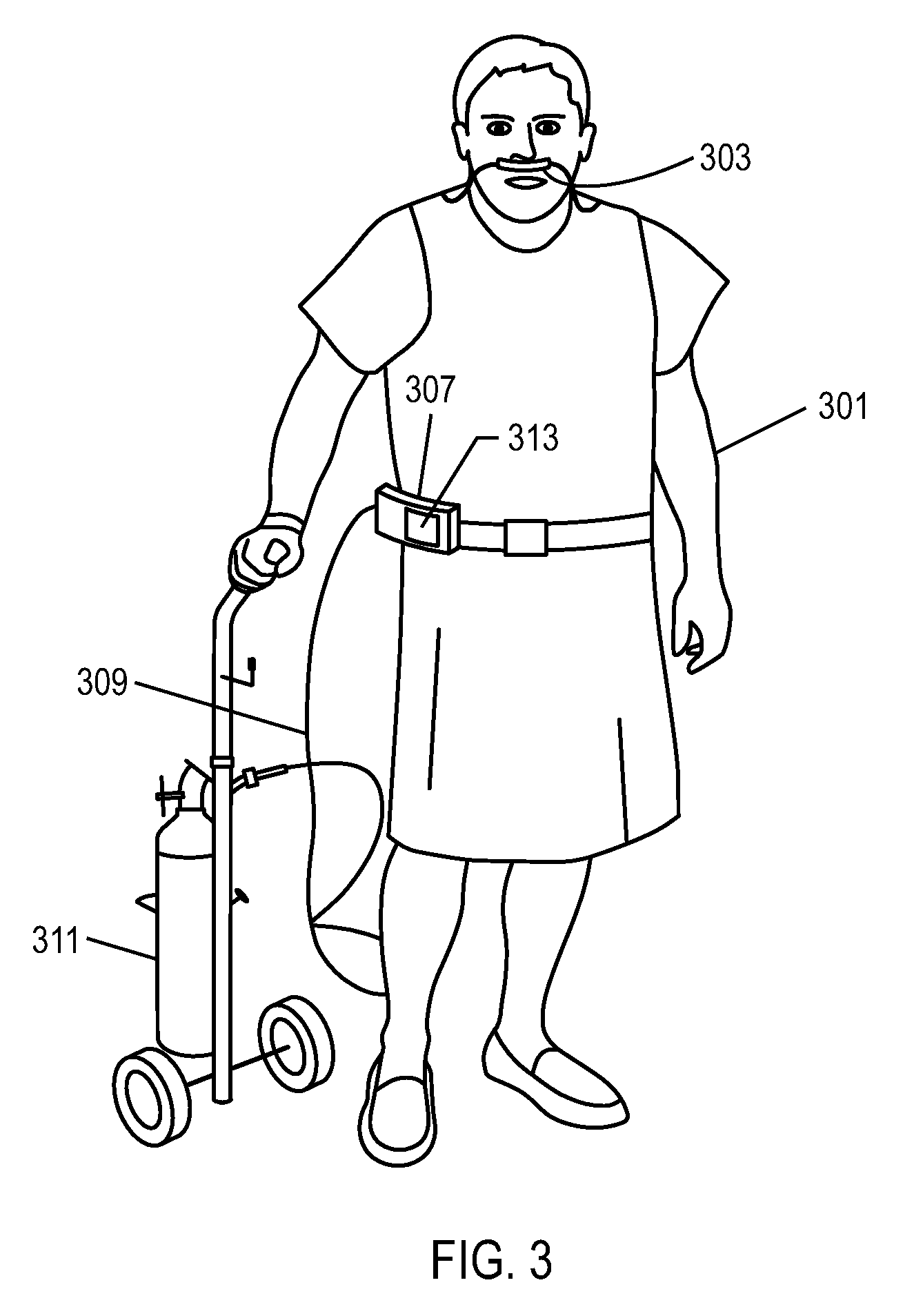Methods, systems and devices for non-invasive ventilation including a non-sealing ventilation interface with a free space nozzle feature
a non-invasive ventilation and free space technology, applied in the field of ventilation therapy, can solve the problems of not being able to mechanically help, consuming a significant quantity of oxygen, and burdening the patient, and achieve the effect of convenient and efficient way of administering medication and promoting activity
- Summary
- Abstract
- Description
- Claims
- Application Information
AI Technical Summary
Benefits of technology
Problems solved by technology
Method used
Image
Examples
Embodiment Construction
[0069]FIG. 1 shows a prior art conventional oxygen delivery cannula 101 for administering oxygen therapy. Extensions 105 on the cannula 101 are configured to enter nares 103. A proximal end (not shown) of the cannula 101 is connected to an oxygen delivery device that delivers continuous flow oxygen at 1-6 LPM to the user's nose, or delivers a bolus of oxygen upon detection of an inspiratory effort. The system of FIG. 1 does not mechanically support the work of breathing of the patient, and is not believed to be effective in preventing moderate to severe forms of OSA. The cannula of FIG. 1 is also used with another oxygen delivery therapy, high flow oxygen therapy (HFOT), in which more than 15 LPM of humidified oxygen is delivered at a continuous flow rate to the user's nose. Due to the high flow required for HFOT, the system is non-portable and the oxygen must be humidified.
[0070]FIG. 2 shows a prior art respiratory support therapy for non-invasive ventilation (NIV), using a nose ma...
PUM
 Login to View More
Login to View More Abstract
Description
Claims
Application Information
 Login to View More
Login to View More - R&D
- Intellectual Property
- Life Sciences
- Materials
- Tech Scout
- Unparalleled Data Quality
- Higher Quality Content
- 60% Fewer Hallucinations
Browse by: Latest US Patents, China's latest patents, Technical Efficacy Thesaurus, Application Domain, Technology Topic, Popular Technical Reports.
© 2025 PatSnap. All rights reserved.Legal|Privacy policy|Modern Slavery Act Transparency Statement|Sitemap|About US| Contact US: help@patsnap.com



